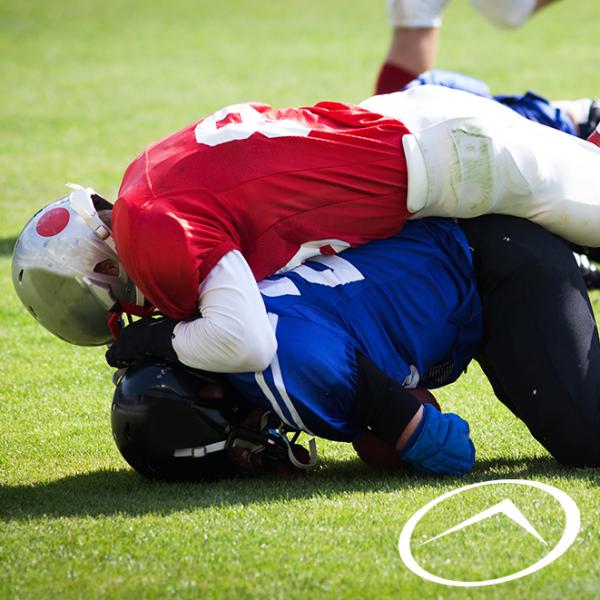Youth Football Concussion Prevention Program Shows Early Signs of Success

As the play clock winds down, your team takes formation and the center snaps the ball. That unmistakable sound of helmets colliding fills the airwaves. You charge downfield for a pass, then suddenly, your forward progress comes to a screeching halt. You sense an unnerving ringing in your head and a burst of light fills your line of sight. Reality begins to slip away. Minutes later, you awake to find yourself lying motionless on the ground. That once thunderous sound of cheers from the stands has lessened to silence. It’s that moment you sense something isn’t right.
You finally make it to the sidelines trying to make sense of the situation - but to no avail. Regrettably, your team isn’t staffed with an on-site trainer, so the coaching unit, to the best of their abilities, diagnose your condition as just a minor upper body injury. As the days pass, you struggle to concentrate. At times, vertigo has you questioning gravity’s effectiveness. It’s then that you realize these symptoms imply a concussion - though no mention was made of it. You decide to go see a specialist, and just as expected, you suffered a moderate concussion. Fortunately, through modern science and advancements in treatment techniques, providers such as ATI, are equipped with the treatment protocols to safely get individuals back to the demands and activities associated with their lifestyle.
The commonality of situations like this among youth football players is hitting staggering levels, and with participation rates dropping fast, organizations across the country are scrambling to find a solution.
A program tabbed Heads Up Football, which was adopted a few years ago by USA Football is quickly becoming a beacon of hope for players and coaches.
Heads Up Football is a program built on improving training and tackling techniques for coaches and trainers. The program also educates players on concussion awareness and key safety issues. Heads Up training is now used by more than 7,000 youth and high school football programs across the United States, according to USA Football.
To further understand the program’s impact on brain trauma prevention, a team of researchers, led by ATI’s very own clinical research scientist, Ellen Shanley, PhD, PT, OCS, spent months collaborating with USA Football. The group developed a multi-level analysis that would better identify the variances in concussion instances and recovery times. The study measured standard training methods (used by 60% of organizations – according to research) against the Heads Up Training program.
In advance of the 2015 high school football season, USA Football mounted the program by administering Heads Up training to 14 schools (1,818 players) and standard training methods to the remaining 10 schools (696 players). A total of 2,514 students were tracked throughout the season.
To ensure full compliance and proper usage of the training methods/techniques, USA Football officials conducted three random evaluations over the course of the season. Adding to compliance standards, athletic trainers at each participating school were tasked with monitoring and recording injury data from practices and games. For players sustaining concussions, treatment was administered within the same healthcare provider network - to maintain consistency within the data.
Throughout the study, a total of 117 concussions were documented by medical personnel. Of these injuries, players who trained using the Heads Up program sustained 75 concussions (out of 1,818 players) compared with 45 from the non-Heads Up teams (696 players). These injuries represent a concussion rate of 4.1 per 100 players for the Heads Up athletes compared to 6.0 for non-Heads Up athletes.
“The results of our study seem to suggest that possibly less severe concussions were occurring with the Heads Up group which could be a significant hurdle to learning about and preventing concussions in youth football and keeping kids active,” said Shanley. “With this being the first paper to evaluate the impact of this type of training program on the incidence and recovery of concussion, we hope to do additional research with a larger data pool to continue to build insights.”
Research also found that concussed players involved in the Heads Up program returned to action 27 percent faster. To view the official research abstract, click here.
Given the success of this early data set, the Heads Up Football training approach is emerging as a favorable long-term solution to reducing the rate of serious brain injuries. Ellen and team will continue their mission of gathering evidence in support of this impactful training program.
If you or someone you know has recently experienced a head injury, get it checked out right away. Stop by an ATI clinic near you or schedule a complimentary screening at ATI Physical Therapy today!
